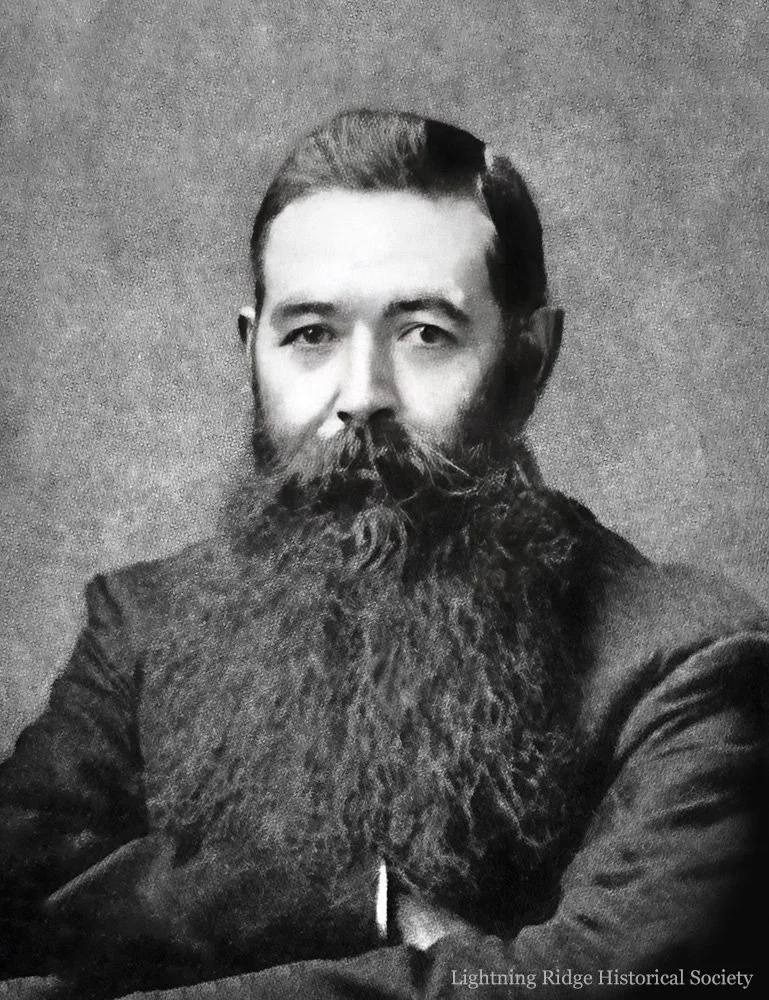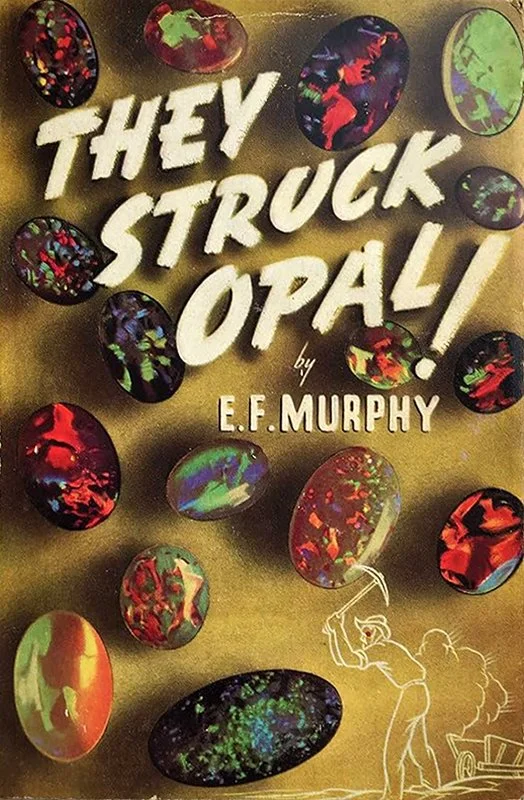E. F. “Ted” Murphy
Edmund Francis “Ted” Murphy was born at Mount Edgerton, Victoria, in 1863. As a young man he travelled north, working cattle in the Wilcannia district before joining the search for gold at Mount Browne.
Between 1895 and 1898 he held the Block 1 open cut at White Cliffs, and later managed “The Company,” an opal tribute system for miners based at Wilcannia. Murphy also acted as representative for Tullie Wollaston, the Adelaide gem merchant credited with opening the English market to Australian opal in the 1880s.
In 1903, when Charlie Nettleton and Jack Murray assembled a parcel of black opal from Lightning Ridge and it was brought to White Cliffs, Murphy agreed to take the risk, buying the dark stones:
“On 11 November, 1903, Charlie Nettleton, prospector of the Lightning Ridge opal field, came to me at White Cliffs with a parcel of opal of an entirely new variety-very dark, although it did have some good colour.”
Murphy trusted Nettleton, and when Wollaston approved the purchase he forwarded a cheque to the Ridge men. Miners from White Cliffs soon followed with confidence to the new rush.
Murphy first visited Lightning Ridge in 1905, and in 1907 moved there permanently with his wife Mary and son Ned. His bark hut at Old Town was later destroyed by fire, but he had already applied for a lease block in New Town, which was granted in 1908. Ned later married Kitty Cowan, half-sister of George Cowan, and they had a son, Reg.
By 1911, Ted and Mary were living in Waverley, Sydney. That year Murphy purchased the Black Opal Shop in the Sydney CBD from lapidarist Theo Lorenz, who in turn came to settle at Lightning Ridge. Surviving artefacts include a jewel box and business card. The Sands Directory of 1933 records the Murphys at “Maryville,” Waverley, though the house has since been lost.
Murphy maintained correspondence with Gwen Rowe, later historian of White Cliffs, whose papers are held in the Charles Rasp Library, Broken Hill.
In 1948 he published They Struck Opal!, documenting his experiences at White Cliffs and Lightning Ridge.
Ted Murphy died on 5 January 1950, aged 87, and was buried at Eastern Suburbs Memorial Park, Randwick, Sydney.
Ted Murphy’s signature, sourced from correspondence between Murphy and Ion. L Idriess, 18 March 1949.
Article: Research by Leisa Carney, edited by Russell Gawthorpe. LRHS research compiled by Len Cram and Barbara Moritz. Sources: Walgett Spectator, 20 July 1907, 12 October 1907, 24 December 1909, 17 March 1911, 30 June 1911, 9 November 1911; Lightning Ridge: The Land of Black Opals, Ion L. Idriess, 1940, chapters XVII, XXVI, XXIX, p. 106; They Struck Opal!, E. F. Murphy, 1948, p. 151; ‘Pioneer of Outback Tells of Roaring Days of White Cliffs Opal’, Barrier Miner, 24 April 1946, p. 3; The Silver City, Ion L. Idriess, 1956, pp. 211-213; The Book of Opals, W. C. Eyles, 1964, pp. 84, 88; The Lightning Ridge Book, Stuart Lloyd, 1967, p. 11.



